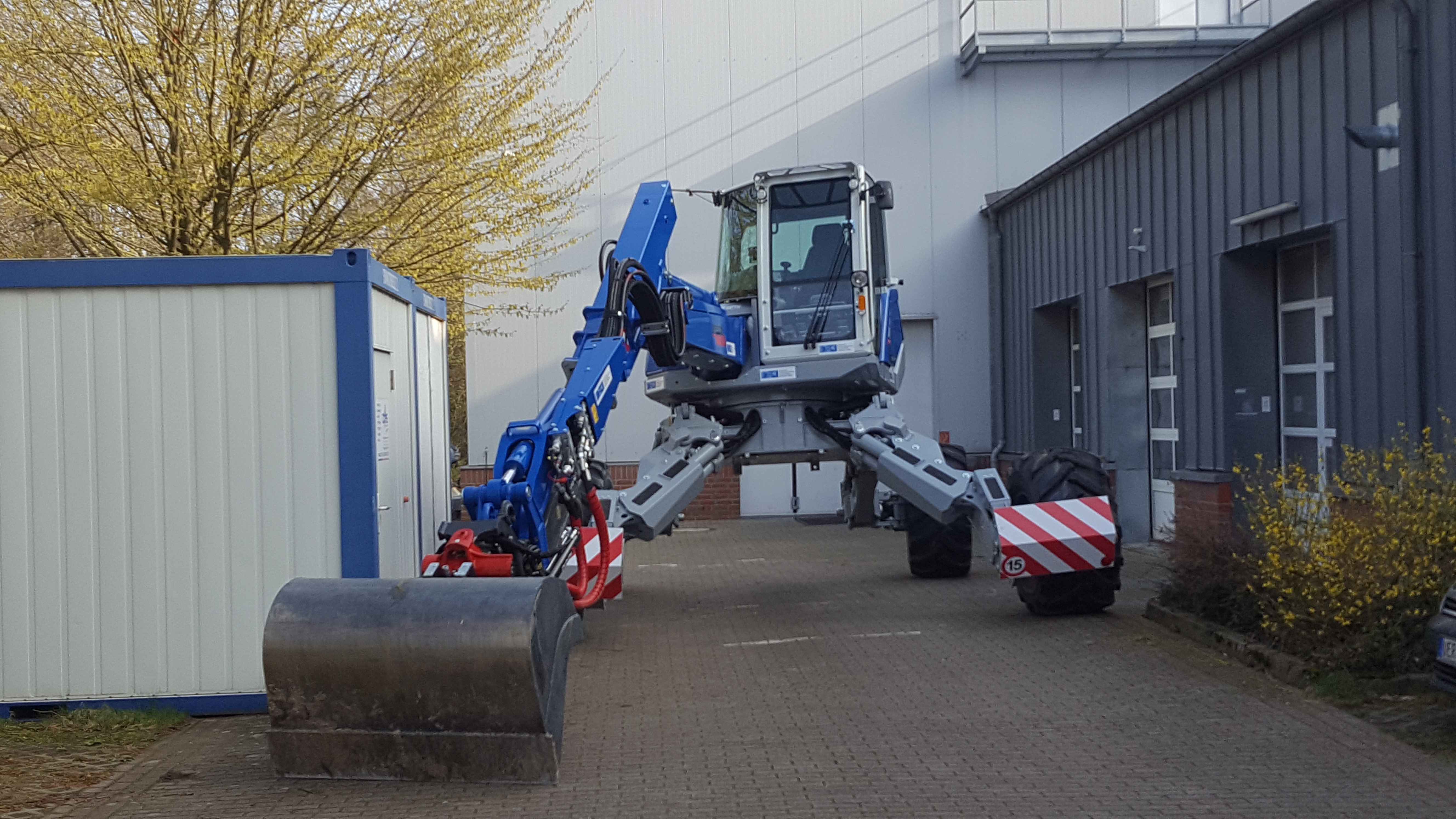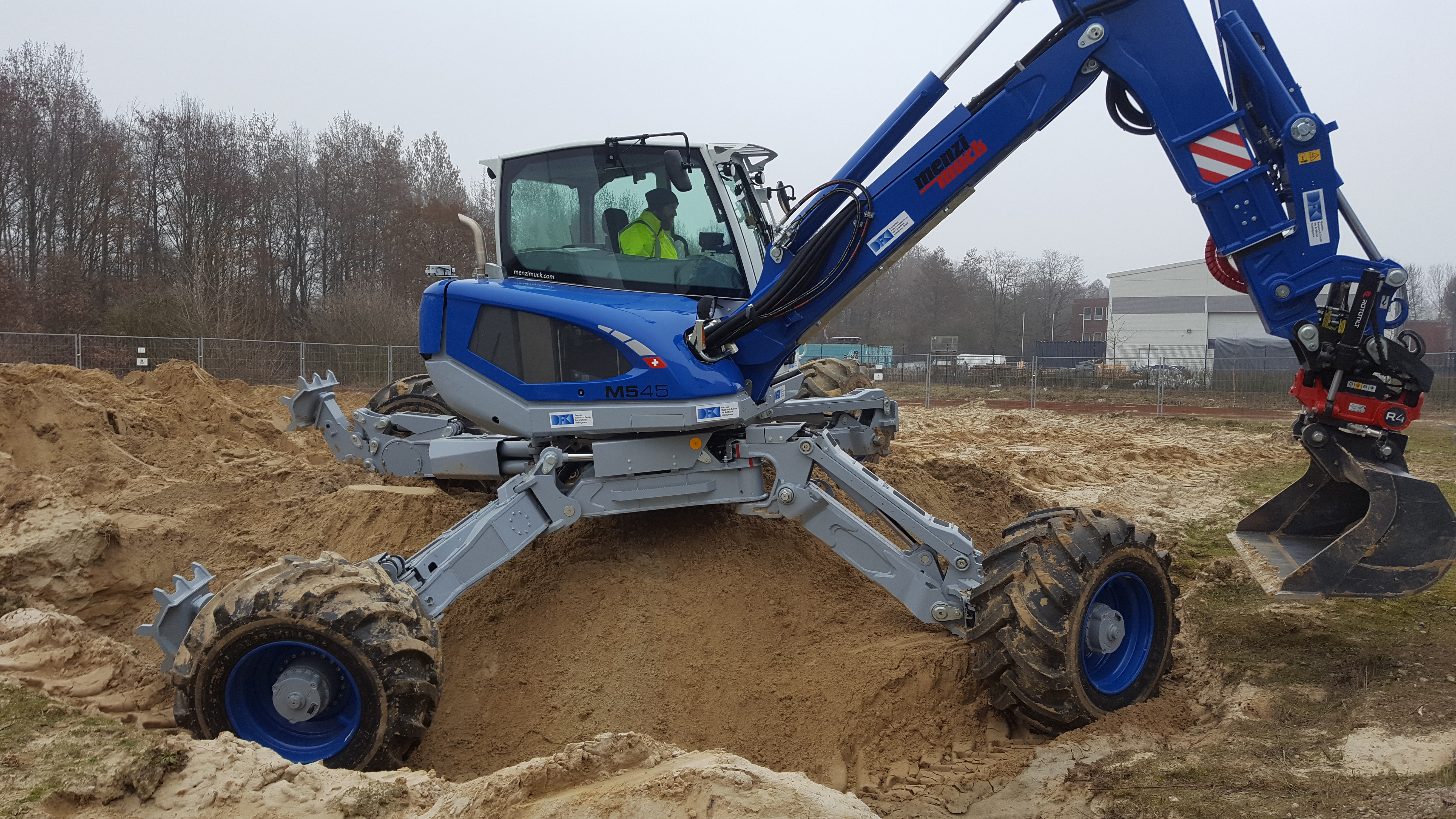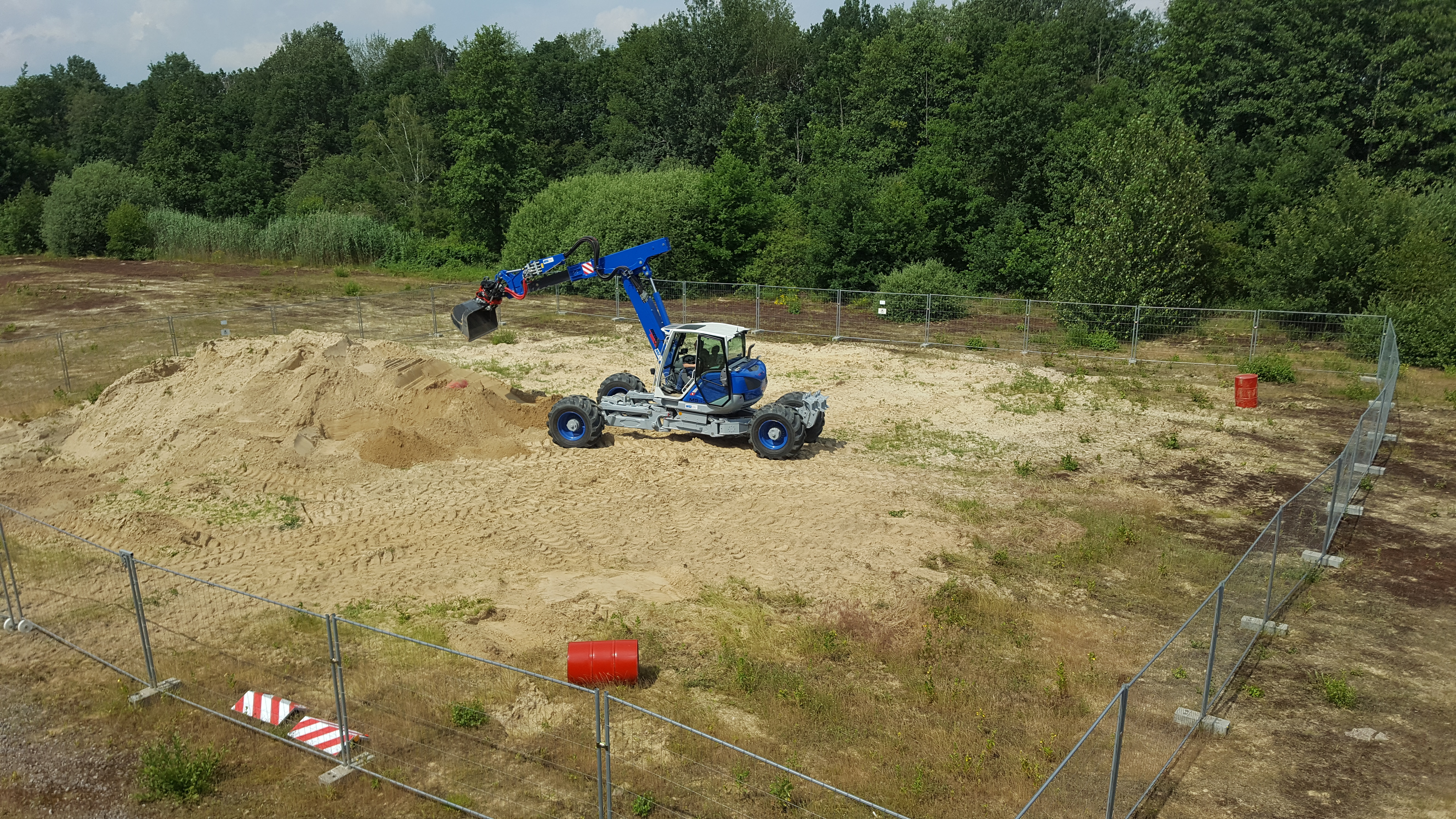ARTER
Autonomous Rough Terrain Excavator Robot
Technical Details
| Size: | Minimum: 2.55 m x 2.43 m x 6.19 m (l, w, h) Maximum: 4.20 m x 6.14 m x 8.21 m (l, w, h) |
| Weight: | approx.12,400 kg (+ attachments / approx.13,000 kg total) |
| Power supply: |
Diesel
|
| Speed: | 13 km/h |
| Actuation/ Engine: |
Deutz T-Diesel 115 kW / 155 PS / 4.038 ccm
Working pump: 290 L/min; 300 bar
Traction pump: 210 L/min; 300 bar
Powerline: 220 L/min; 300 bar
|
| Sensors: |
Several laser scanners, an inertia measurement unit with DGPS, stereo camera systems, an indoor location system and a thermal camera continuously provide data for mapping, localization and display in the control center.
|
| Communication: |
2.4 or 5 Ghz Airmax WiFi System
|
| Manipulatorleistung: |
Reißkraft: 69.000 N
Losbrechkraft: 102.000 N
Hubkraft: 24 – 91.8 KN (je nach Fahrwerks- und Manipulatorstellung)
|
Organisational Details |
|
| Partner: |
Fraunhofer Institute of Optotronics, System Technologies and Image Exploitation IOSB Karlsruhe Institute of Technology (KIT) FZI Research Center for Information Technology Götting KG Kraftanlagen Heidelberg GmbH ICP Ingenieurgesellschaft Prof. Czurda und Partner mbH KHG Kerntechnische Hilfsdienst GmbH |
| Sponsor: | Federal Ministry of Education and Research |
| Grant number: | Funded by the Federal Ministry of Education and Research as part of the federal government's “Research for Civil Security” program with grant number 13N14675. |
| Application Field: |
Assistance- and Rehabilitation Systems
Logistics, Production and Consumer SAR- & Security Robotics |
| Related Projects: |
SmartRecycling
KI und Robotik für eine nachhaltige Kreislaufwirtschaft
(07.2020- 02.2021)
ROBDEKON
Robot systems for decontamination in hostile environments
(06.2018- 06.2022)
|
| Related Robots: |
SherpaTT
Capio Upper Body Exoskeleton for Teleoperation
Exoskeleton Active (VI-Bot)
Upper body Exoskeleton (right arm)
|
| Related Software: |
Phobos
An add-on for Blender allowing editing and exporting of robots for the MARS simulation
|
System description
A multi-layered security concept in hard- and software ensures that the excavator can be handled safely at all times during development, experiments and in use.
ARTER uses its many sensors to record its environment and provides an external control center with a comprehensive picture of itself, its surroundings and its mission. If necessary, the robot excavator can be teleoperated via two joysticks or with a virtual reality headset. The control in a three-dimensional image of its environment is a completely new control approach, in which the perspective, size ratio, environmental information and force feedback is freely selectable.
Videos
Robdekon: ARTER mobile walking excavator and SherpaTT rover working together to recover a barrel

DFKI has equipped the ARTER walking excavator with new mechanical components, sensors and software so that various control modes can now be implemented. This includes both teleoperation and automation. Easy-to-use interfaces between the robots and humans allow one operator to control both systems. In addition to live images of the surroundings, the control center also receives 3D data from which map material is generated. Once the operator has gained an accurate picture of the position and condition of the barrel to be recovered using the camera in Sherpa's arm, it can be retrieved and brought to a safe location.





